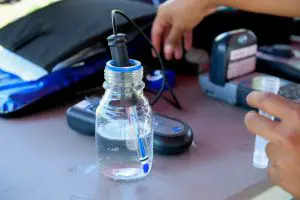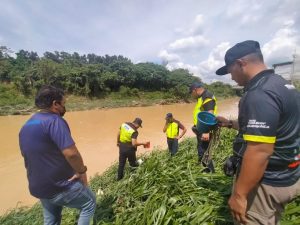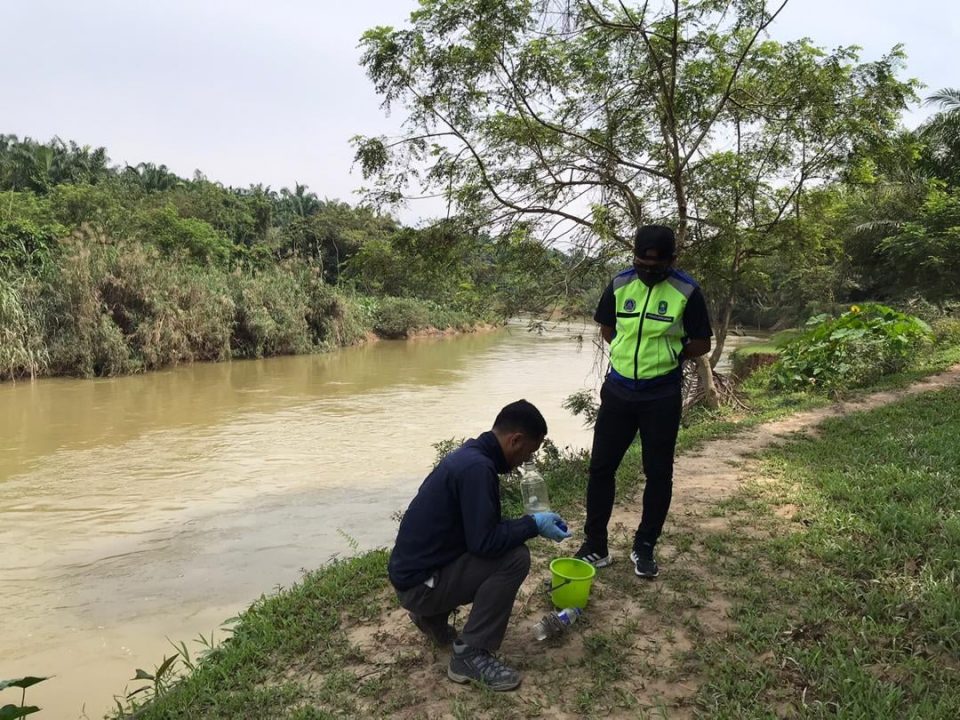KUALA LUMPUR, Nov 23 — While passionate members of the public are increasingly concerned with environmental issues, the question arises if the debate has lost nuance.
Till today, Malaysia is still grappling with frequent water supply disruptions due to pollution, which has taken a toll on the daily routines of millions of consumers.
Klang Valley residents are becoming restless and are outraged by the frequent water disruptions especially unscheduled interruptions, forcing affected residents to rely on water tank trucks.
Last month, residents in certain areas in Klang, Shah Alam, Petaling, Gombak, Kuala Lumpur, Hulu Selangor and Kuala Selangor had to go through another episode of water cuts arising from odour pollution at the water treatment plant (WTP) in Sungai Selangor.
Meanwhile in Negeri Sembilan early this month, Menteri Besar Datuk Seri Aminuddin Harun said that stern action will be taken against those responsible for causing diesel-like odour pollution at the Sungai Linggi Water Treatment Plant in Port Dickson.
He said that irresponsible perpetrators who released the scheduled waste have caused a major disruption of water supply to most residents in the district. As a result, the water treatment plant had to be temporarily halted.
There does not seem to be a quick or easy solution to river pollution. Is the frequent occurrence attributed to the weakness in existing laws in dealing with the scourge, which continues to rear its ugly head?
The government is expected to table the Environment Quality Act (Amendments 2023) in the Dewan Rakyat during the first quarter of next year.
Experts welcomed the move to improve the existing act as a step in the right direction. However, the act which will focus on improvements related to punishment for environmental crime cases is seen as insufficient to tackle the pollution issue in the country.
The bill also includes amendments to 28 sections of the Environmental Quality Act 1974, among others, imposing heavier punishment with minimum fines of not less than RM5,000 and mandatory imprisonment of not more than five years as well as increasing the penalty to not more than RM10 million for offences such as water pollution and illegal disposal of scheduled waste.
The compound rate has also been increased from not exceeding RM2,000 to not exceeding 50 per cent of the maximum fine for related offences.

Insufficient
On the issue, water quality and modelling specialist Dr Zaki Zainudin opined raising penalties to address the pollution issue would be inadequate without effective monitoring.
He said river pollution could also originate from small industrial premises such as workshops, agricultural and mining activities, noting that river pollution that happened in Selangor previously was due to contaminants from a lorry workshop, causing the WTP to temporarily shutdown.
“In the past, pollution also originated from aquaculture or agriculture sources. One time in Johor, pollution from a chicken manure facility caused pollution to Sg. Johor resulting in the shutdown of water treatment plants.
“Some entrepreneurs, whether they are big or small, do not even realise their operations are located in a river basin and that whatever waste that is discharged into drains ultimately ends up in the river.”
He also stressed it is crucial that water catchment areas be protected, large-scale and high-risk operations should not be allowed to operate at the upstream, to protect the water intakes downstream.
Universiti Putra Malaysia (UPM), Department of Environmental and Occupational Health, senior lecturer Assoc Prof Dr Haliza Abdul Rahman touched on the effectiveness in the fight against environmental pollution predators.
She said, while the proposal to impose heavier punishment in the Act, is timely, the level of enforcement is still weak to the extent that environmental offenders are not afraid to repeat their offence.
As such, Haliza said environment enforcement agencies should be empowered including integrity enforcement officers to crack down on polluters to ensure the river’s ecosystem continues to be preserved.
Collective responsibility
Through improvements to the Environmental Quality Act 1974, it is incumbent of the government to determine the best procedures in identifying pollution offenders so that they are taken to court, a UPM expert said.
Senior lecturer at the Faculty of Forestry and Environment, Dr Mohd Yusoff Ishak in sharing his thoughts on the matter gave a comparison between trader A at a wet market who takes the initiative by managing waste disposal in the proper manner and trader B who indiscreetly throws the waste into the river.
“In such a situation, how do the authorities determine the offenders, who are at fault and who are not, especially when chicken blood wastes, for example, are all the same. Organic waste if thrown into the river can raise the Biochemical Oxygen Demand (BOD) level, hence reducing the dissolved oxygen in the water and threaten the river biodiversity,” he explained.
BOD refers to the amount of oxygen required to decompose organic matter in water. The greater the BOD, the more organic pollutants there will be in the water and the more serious the pollution.
In this respect, collaboration with other ministries should be strengthened given the limitations of the Natural Resources, Environment and Climate Change (NRECC) Ministry as well as agencies under the ministry to manage river pollution whenever an incident occurs.
He also expressed hope that every industry player which produces waste should continue to comply with the environmental, social, and governance (ESG) guidelines which are applicable for the corporate sector so that the community can assess the relevant parties’ commitment to environmental sustainability.
“The main challenge is how to ensure companies adhere to the ESG. In other countries, companies which do not comply with the ESG and are found to pollute the environment will face legal action and risk losing their business besides the high carbon penalty imposed and this could be practised in our country,” he shared.
In addition, it is also crucial that cooperation among the authorities, private sector and the community be strengthened in preserving the environment. The implementation of policies and initiatives involving all parties is vital to achieve environmental sustainability, he added.
Meanwhile, Department of Environment (DOE) director general Datuk Wan Abdul Latiff Wan Jaffar said, besides ensuring sustainable river ecosystem, harsher punishment should also be imposed on environmental offenders given the health implications on the people.
For example, disposal of heavy metals such as cadmium by industries would pose risks of heart or pulmonary complications, testicular cell and sperm cell toxicity. Cadmium is also classified as a cancer risk and can be harmful to aquatic life.
“Pollution can result in increased pressure, reduce the immune system and affect the growth of aquatic life as contaminated water can potentially cause diseases to be transmitted among farmed aquaculture.”

Empowering environment conservation
According to the River Water Quality Monitoring Report 2022, 495 out of 672 rivers recorded Air Quality Index that were categorised as clean while 148 rivers were moderately polluted, and 29 others were polluted.
Overall, the data showed high number of polluted cases under the Environmental Quality Act 1974. However, inspections were limited due to the shortage of enforcement officers.
As such, the DOE is cognisant of the need to increase the number of enforcement officers from 1,119 currently.
“Given the rise in the number of pollution cases each year, it would only be appropriate for the government to consider providing additional DOE enforcement officers in addressing the environmental issue as we are also entrusted with ensuring the 89 sections, 18 regulations and 15 orders under the act are complied.
“These are related to industry pollution control, not only industries but also the domestic sector, development projects as well as emissions from motor vehicles,” he said.
As an environmental enforcement agency, he stressed that DOE would continue to conduct periodic enforcement on factories under Environmental Quality Act 1974 and among the activities undertaken include Gempur Ops.
This operation is focused on enforcement on industries with high risk of causing pollution. In addition, various programmes are held by DOE to create awareness among factory owners on the importance of preserving the environment.
“Amendments to the Environmental Quality Act 1974 clearly show the government’s commitment to address the issue of pollution that is committed by environmental perpetrators; their irresponsible acts are detrimental both to the ecosystem as well as the quality of human health,” he added.
— Bernama





